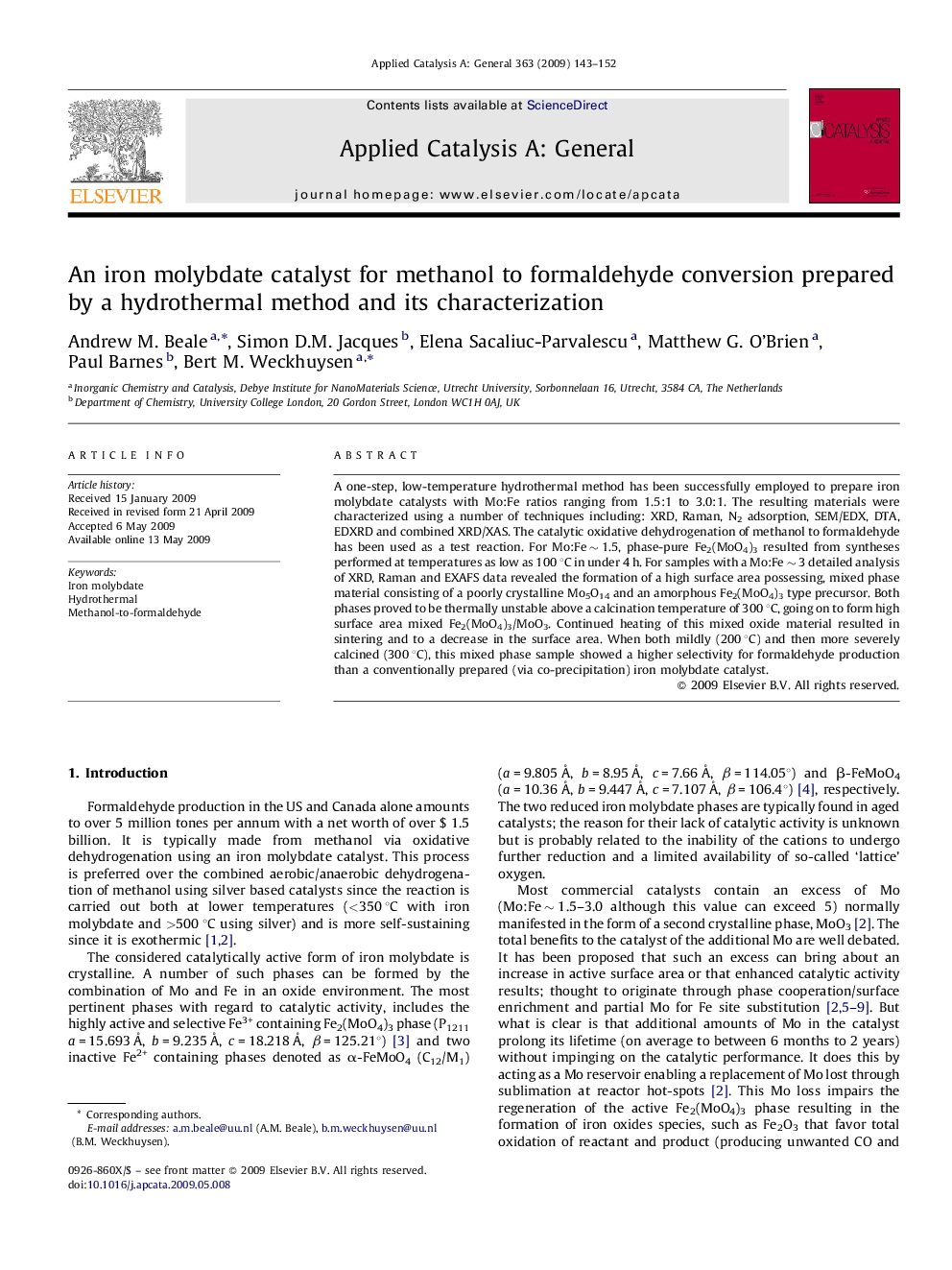| Article ID | Journal | Published Year | Pages | File Type |
|---|---|---|---|---|
| 42319 | Applied Catalysis A: General | 2009 | 10 Pages |
A one-step, low-temperature hydrothermal method has been successfully employed to prepare iron molybdate catalysts with Mo:Fe ratios ranging from 1.5:1 to 3.0:1. The resulting materials were characterized using a number of techniques including: XRD, Raman, N2 adsorption, SEM/EDX, DTA, EDXRD and combined XRD/XAS. The catalytic oxidative dehydrogenation of methanol to formaldehyde has been used as a test reaction. For Mo:Fe ∼ 1.5, phase-pure Fe2(MoO4)3 resulted from syntheses performed at temperatures as low as 100 °C in under 4 h. For samples with a Mo:Fe ∼ 3 detailed analysis of XRD, Raman and EXAFS data revealed the formation of a high surface area possessing, mixed phase material consisting of a poorly crystalline Mo5O14 and an amorphous Fe2(MoO4)3 type precursor. Both phases proved to be thermally unstable above a calcination temperature of 300 °C, going on to form high surface area mixed Fe2(MoO4)3/MoO3. Continued heating of this mixed oxide material resulted in sintering and to a decrease in the surface area. When both mildly (200 °C) and then more severely calcined (300 °C), this mixed phase sample showed a higher selectivity for formaldehyde production than a conventionally prepared (via co-precipitation) iron molybdate catalyst.
Graphical abstractA one-step, low-temperature hydrothermal method has been successfully employed to prepare high surface area iron molybdate catalysts with Mo:Fe ratios of 1.5:1–3:1. Syntheses performed with a Mo:Fe ∼ 3 resulted in a mixed crystalline Mo5O14/amorphous FeMo oxide phase, with the chemical formula which was unstable above a calcination temperature of 300 °C, forming mixed Fe2(MoO4)3/MoO3. The Mo:Fe ∼ 3 phase after both mild (200 °C) and more severe calcinations (300 °C), showed a higher selectivity for formaldehyde production than a conventionally prepared (via co-precipitation) iron molybdate catalyst.Figure optionsDownload full-size imageDownload as PowerPoint slide
